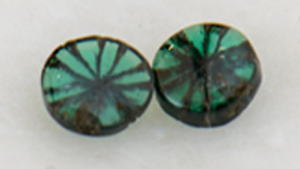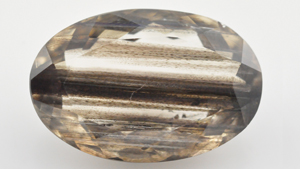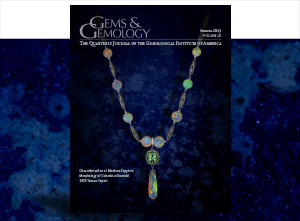
Pleochroic colors caused by cyclic twinning produce a kaleidoscope effect in alexandrite.
Read More
Two Australian rough diamonds demonstrate both pink and colorless sections in the same crystal.
Read More
The first report of iridescent andradite from China.
Read More
Examines dissolution features of heliodor and green beryl from a Ukrainian pegmatite field and offers criteria to distinguish them from samples found in other localities.
Read More
At the AGTA show, Equatorian Imports showed this contributor two pieces of emerald with a very rare double-trapiche pattern
Read More
This contributor encountered parcels of rough and faceted scapolite that appeared strongly zoned to the unaided eye.
Read More
This stone was a good example of a very rare natural diamond exhibiting synthetic growth characteristics.
Read More
Describes the occurrence of iridescence, and the role of differential etching, in quartz crystals from India’s Jalgaon District.
Read More
An overview of the Spring 2023 Gems & Gemology content.
Read More
A look at plastic deformation, one of the most prevalent features in natural diamond.
Read More